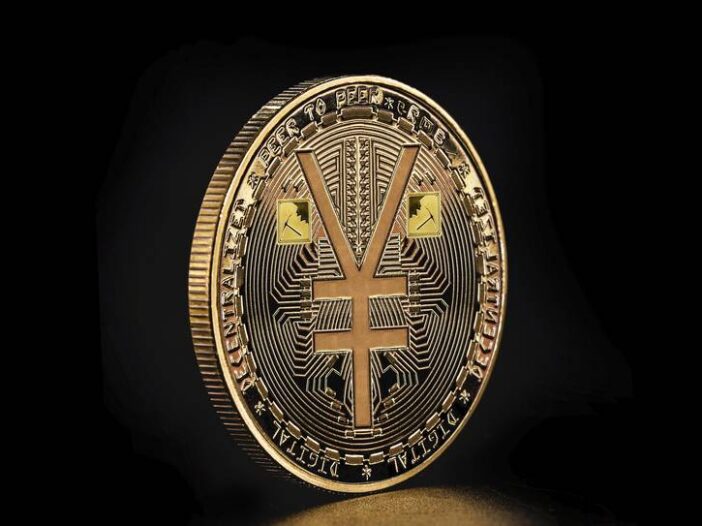Going to the Olympics? Don’t Leave Home without Your Chinese Digital Yuan
By now you’ve heard about central bank digital currencies, or CBDCs. These are not cryptocurrencies, although the two are often confused. A true cryptocurrency is recorded on a blockchain, has a decentralised issuance network, and is loosely regulated (if at all).
A CBDC is issued by a central bank, which makes the issuance and governance highly centralised. A CBDC does not need a blockchain ledger; the central bank can maintain its own encrypted permissioned digital ledger of counterparties who can hold and spend the CBDC. (This does not have to be a small group; it could include the entire population of a large country or any transacting counterparty around the world. It just means that the issuing central bank decides who can use it and who cannot.)
Most importantly, a CBDC is a new form of payment, but not a new currency. The digital currencies will still be dollars, euros, yen, or yuan — depending on the central bank. What’s new is that these currencies will be usable in direct transfers or through payment channels such as Venmo, Apple Pay, Square, etc. It may even be possible for an individual to have a direct digital account with the Federal Reserve, which would disintermediate the credit card and banking systems entirely.
Right now, the leader in using CBDCs is the People’s Bank of China
According to this article, China may use the 2022 Beijing Winter Olympics as a showcase for its new digital yuan. The yuan-based CBDC is already being used in prototype form, but the Winter Olympics would give usage an enormous boost because it would involve tens of thousands of foreign visitors who would presumably take their yuan balances and payment apps back to their home countries where they would be used in future transactions.
This viral effect would enhance the role of the yuan as an international reserve currency.
The dark side of CBDCs
Of course, all of this ignores the dark side of CBDCs. The goal of CBDCs is to eliminate paper money. Once money is 100% digital, it will be easier for central banks and finance ministries to impose negative interest rates, confiscate account balances for politically incorrect behaviour, and impose withholding taxes directly on your bank balances.
Even worse, a fully digital payment system run by a central bank is an ideal surveillance mechanism because the currency issuer will know every purchase you make and your physical whereabouts when doing so. This is the ultimate in totalitarian surveillance.
China will even be able to monitor transactions of foreigners in their home countries because the payment information will run through Chinese computers controlled by the Communist Party of China. The world of CBDCs is really a Brave New World of surveillance and control. The only way to fight back is with a non-digital, non-traceable, physical store of wealth such as gold, silver, land, or fine art.
Or perhaps delis are the next big investment trend?
A New Jersey deli is worth US$100 million
When I first saw this story about a deli in New Jersey that was worth US$100 million, I couldn’t believe it. I assumed the deli must have a big-ticket franchising deal with McDonald’s or Subway to expand to 1,000 locations under the original name brand. That type of deal might justify a sky-high valuation for a one-store operation. But, no, there was no franchise deal or other licensing deal that might explain the price. It’s just a deli with about US$35,000 in annual sales. As one analyst said, ‘The pastrami must be amazing.’
It turns out that the owner of the deli created a company called Hometown International and company shares trade over-the-counter. Recently, investors have bid up the stock price from US$9.25 per share to US$14 per share, giving the deli company a market capitalisation of US$113 million. This story is not really about delis or pastrami. It’s about market bubbles and ridiculous valuations that can result when retail investors bid up stocks in the hope that a greater fool will pay them even more when they cash out.
Is this kind of bubble in one stock true of the broader market indices?
In these situations, the market capitalisation becomes completely detached from fundamental value, projected earnings, or any other tool used in securities analysis. It’s just a bubble with inevitable losses for the last buyers. But bubbles can last longer than many believe, because there is a continual flood of new buyers who hope that they won’t be the last ones to run for the exits.
The bigger issue is whether this kind of bubble in one stock is true of the broader market indices. The Dow Jones Industrial Average, the S&P 500, and the NASDAQ Composite are all at or near all-time highs. This does not automatically mean the stock market indices are in bubble territory. However, many objective metrics, including the ratio of market cap-to-GDP and the Shiller CAPE price earnings ratio, indicate that is the case.
It will take some exogenous shock to bring markets back to Earth
Saying that markets are overvalued is not the same as saying they’re ready to crash. It will take some exogenous shock — such as higher interest rates, a geopolitical crisis, or an unexpected bankruptcy of a major company — to bring markets back to Earth. Still, we know that such events do occur with some frequency.
It’s probably not a good idea to short the market, because it could go even higher. It is a good idea to reduce your exposure to stocks, diversify with cash and gold, and just bide your time. When the crash comes, you’ll be greatly outperforming those who are all in with stocks — including delis.
Regards,
 |
Jim Rickards,
Strategist, The Daily Reckoning Australia
PS: This content was originally published by Strategic Intelligence Australia, a financial advisory newsletter designed to help you protect your wealth and potentially profit from unseen world events. Learn more here.

